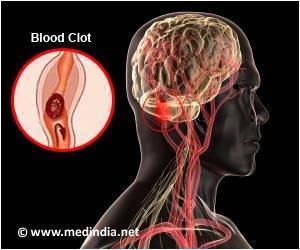Finnish researchers have found in Arctic reindeers maggots known to cause elephantiasis.
Reindeers in the Arctic could hold the key to a cure for the dreaded elephantiasis, Finnish scientists say. Finnish researchers have found in Arctic reindeers maggots known to cause elephantiasis. And if only they could check the spread of the maggots in reindeers, that could show the way for a lasting cure for the dreaded elephantiasis.
They have found the filarioidea-family maggots in reindeers in Kuusamo, less than 100 km from the Arctic Circle. "From trying to stop this worm (in reindeer) we can get information that could be meaningful in the fight against elephantiasis," Professor Antti Oksanen from Finnish food safety authority Evira said.Elephantiasis generally results from obstructions of the lymphatic vessels. It is most commonly caused by a "http://en.wikipedia.org/wiki/Parasitic_disease" "Parasitic disease" parasitic disease known as "http://en.wikipedia.org/wiki/Lymphatic_filariasis" "Lymphatic filariasis" olymphatic filariasis.
The disfiguring disease is spread by mosquitoes to humans. It can cause limbs to swell up to several times of their normal size, as well as fever and pain. The World Health Organization has been waging a major battle against the disease. It says That lymphatic filariasis, known as Elephantiasis, puts at risk more than a billion people in more than 80 countries.
Over 120 million have already been affected by it, over 40 million of them are seriously incapacitated and disfigured by the disease. One-third of the people infected with the disease live in India, one third are in Africa and most of the remainder are in South Asia, the Pacific and the Americas. In tropical and subtropical areas where lymphatic filariasis is well-established, the prevalence of infection is continuing to increase.
A primary cause of this increase is the rapid and unplanned growth of cities, which creates numerous breeding sites for the mosquitoes that transmit the disease. In its most obvious manifestations, lymphatic filariasis causes enlargement of the entire leg or arm, the genitals, vulva and breasts.
In endemic communities, 10-50% of men and up to 10% of women can be affected. The psychological and social stigma associated with these aspects of the disease are immense. In addition, even more common than the overt abnormalities is hidden, internal damage to the kidneys and lymphatic system caused by the filariae.
Advertisement
They live for 4-6 years, producing millions of immature microfilariae (minute larvae) that circulate in the blood. The disease is transmitted by mosquitoes that bite infected humans and pick up the microfilariae that develop, inside the mosquito, into the infective stage in a process that usually takes 7-21 days.
Advertisement
The principal goal of treating affected communities is to eliminate the microfilariae from the blood of infected individuals so that transmission of infection by the mosquito can be interrupted The WHO says it is crucial to implement community education programmes to raise awareness in affected patients. This would promote the benefits of intensive local hygiene and the possible improvement, both in the damage that has already occurred, and in preventing the debilitating and painful, acute episodes of inflammation.
Source-Medindia
GPL/M






